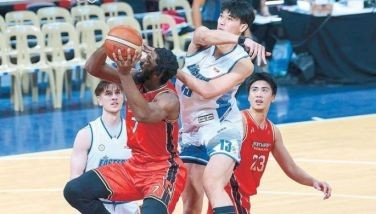Col. Manuel F. Segura Cebuano freedom fighter
(Copy editor Maria Eleanor Elape Valeros and
The dauntless yet under-armed Cebuanos inflicted the highest number of enemy force killed per guerrilla fighter in the
Yet, it was observed that such brave tale remains a footnote in military history. Thanks to retired Col. Manuel Felimon Segura’s skills in journal keeping. War time elegies and victories are carefully annotated in his two books —“Tabunan: The Exploits of Cebu Guerrillas” and “The Koga Papers: Stories of World War II in
Meanwhile, “The Koga Papers” narrated how
Fervent in their cause, Cebuano guerrillas gained control of the southern part of
When the United States Armed Forces in the Far East surrendered to the Japanese, Col. Maning refused to bow to the Japs and instead joined the guerrilla forces in Cebu where he fought many battles starting as a platoon leader with the rank of 2nd Lieutenant and later as the Operations and Combat Officer of the Central Cebu Sector with the rank of Captain. He eventually became the Adjutant General of the Cebu Area Command with the rank of Major, until the end of the Second World War. Under the command of Col. James M. Cushing, the Cebu Area Command was recognized by MacArthur on
Bravery, loyalty and patriotism were put to the test. As if on cue, the resistance movement began the moment the Japanese landed on Philippine shores. Filipino guerrillas opposed strongly and inflicted many casualties in the enemy’s advance. The guerrilla threat was such that the Japs had to put up a fence around the entire city of
Col. Maning, still sharp at 89, vividly remembers some of these big battles of
At that time, Vice Admiral Takajiro Onishi thought of and devised the kamikaze (kami for divine, kaze for wind) suicide attacks on American warships by Japanese pilots who were willing to crash their explosive-laden airplanes into American aircraft carriers, battleships and other US Navy ships. So the celebrated Kamikaze Special Attack Corps was organized in
Col. Maning recalls that during one of their many attacks on the Japanese Toledo Garrison on
On
A total of 11,898 Japanese were killed in 119 encounters and ambushes in the battles here. Forty-five of these battles took place within
Col. Maning earned 24 awards in medals and badges including the Military Merit Medal with Four Bronze Anahaw Leaves (which means he was awarded the MMM five times), US Bronze Star Medal with “V” Device for Heroism in Ground Combat, Distinguished Unit Emblem with Two Bronze Oak Leaf Clusters, American Defense Service Medal with Clasp (for Foreign Service), Asiatic-Pacific Campaign Medal with Four Bronze Combat Stars, World War II Victory Medal, Philippine Defense Ribbon with One Bronze Combat Star, Philippine Liberation Ribbon with Two Bronze Combat Stars, Philippine Independence Ribbon, Long Service Medal with One Bronze Star, Anti-Dissidence Campaign Medal, Philippine Republic Presidential Unit Citation Badge, Combat Infantryman’s Badge, AFP Parachute Badge with Star, US Basic Parachute Badge, and the American Campaign Medal.
But above these merits and the badges pinned on his overseas cap is his prized war trophy – a Japanese Katana – after defeating Lt. Yoshio Kimura in one of said battles. And the fact that when that compatriot who had a 25-centavo-size part of his skull chipped off in the Malubog battle survived the war like the other two patriots he had helped in other battles, he was able to meet him again.
According to Col. Maning, “when I see him, like three other freedom fighters I helped in other battles, he often tells me “Sir, you saved my life!”
Col. Maning was first married to Josefina Mina Roa, nicknamed Nenita, who bore him six daughters and three sons. Nenita passed away in 1987. After seven and a half years as a widower, he married Concepcion “Connie” Rufo Jagdon who decided to have no children. — Notes lifted from Col. Segura’s files labeled “Ego Boosters” and “Freedom Fighters Give Battle for
- Latest
- Trending




















